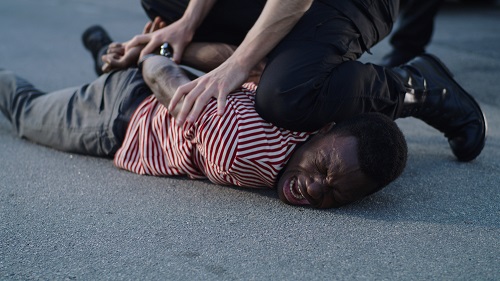Liberty Matters
Additional Reflections on Systemic Racism

Reilly’s essay addresses the issue that I left unexplored – is there systemic racism within the criminal justice system? In other words, are Blacks targeted relatively more than Whites by police, prosecutors, judges, and juries? As he so eloquently lays out, once you control for all relevant variables, race has very little to do with explaining differences in arrests rates or police shootings, for example. Blacks compared to Whites commit crimes at a much higher rate.
So, this brings us back to my original question: do Blacks Commit More Crimes Than Whites? And if so, why?
Similar to my original essay, DeGennaro investigates whether systematic racism explains differences in crime across racial groups. He explores factors that underlie criminal activity and then explains why these factors may affect minorities more than other races.
A factor that keeps coming up is education, and the evidence keeps pointing to educational choice – funding students not schools. Yes! There are many reasons this should be the approach to public education even if it does not affect crime rates. It’s hard to imagine, however, that parents and students gaining access to better education would not reduce the incentives to commit crimes.
In doing some reading on the links between education and crime, it’s harder to understand exactly why the public education system is so much worse in areas that are predominantly Black. It is not hard for me to understand how public education functions, or more accurately, disfunctions. I grew up in rural West Virginia attending WV public schools from kindergarten through Ph.D. To use Reilly’s wording, I am a hillbilly, and a fellow undesirable. We didn’t have any viable private school options in our area. But my educational experience was good enough (though, I didn’t know what economics was until I got to Marshall University).
So why do some public schools, even in disproportionately poor areas, perform better than others? Furthermore, why are the public schools that are performing poorly correlated with Black neighborhoods? Is it simply a rural/urban divide? Luckily, we don’t have to solve this social dilemma before improving a child’s educational options. School choice puts the power and control back in the hands of the parents and students, realigning incentives and improving quality. If it also reduces crime, that is a win-win.
As with my reaction to the question of why the worst public schools seem to be in Black areas, I am curious as to how Black individuals are disproportionately harmed by the war on drugs. We know that Whites also use recreational drugs – the opioid crisis brought this to the forefront of our attention with my home state and Appalachia in general being disproportionately harmed.
We are identifying deeper explanations to explain race and crime (education, barriers to employment, war on drugs, etc.), but I believe there’s more to it. We need to dig deeper to have a better understanding of root explanations for how these factors disproportionately affect individuals across racial groups. Social norms and culture surely play a role, but understanding the interplay between government policies and culture, for example, is complex and not easily understood.
The housing market and home ownership disparities provide another interesting area to study systemic racism. Richardson and Black outline how through the 1960s there was overt and explicit systemic racism in housing—by the US government! Many laws and regulations were passed and enforced for the purpose of not lending to Black applicants, not allowing Black residents to move into certain neighborhoods, and the forced removal of Black neighborhoods for urban renewal. This led to less mobility, lower home ownership rates, more racial segregation, and less ability to accumulate wealth for Blacks. The legacy of these racist laws persists today.
Although the policies are not overt, many current regulations (zoning, banking and loan requirements, less competition among banks) have similar unintended consequences. Furthermore, the root causes of loan denial and lower home ownership by Blacks can largely be explained by other factors than race, such as income, marital status, and FICO scores. However, this puts us in a similar boat as with race and crime. Why do Blacks have disproportionately lower income or FICO scores, for example?
Throughout all the essays, a similar theme emerges. Systemic racism, however defined, can not and does not explain differences in crime, arrests, and incarceration rates or home ownership rates across racial groups. What does explain these differences is past and/or current government policies and regulations that either explicitly or implicitly promote lack of opportunities for Blacks compared to Whites. Less government intervention and more market freedom should be pursued to increase income and wealth and decrease poverty rates.
Increasing quality educational attainment, ending programs that disincentivize a traditional family structure, and eliminating barriers to employment such as minimum wage laws and occupational licensing will do more to improve crime statistics and home ownership rates for Black Americans than claiming systemic racism where none may exist.
Copyright and Fair Use Statement
“Liberty Matters” is the copyright of Liberty Fund, Inc. This material is put on line to further the educational goals of Liberty Fund, Inc. These essays and responses may be quoted and otherwise used under “fair use” provisions for educational and academic purposes. To reprint these essays in course booklets requires the prior permission of Liberty Fund, Inc. Please contact oll@libertyfund.org if you have any questions.